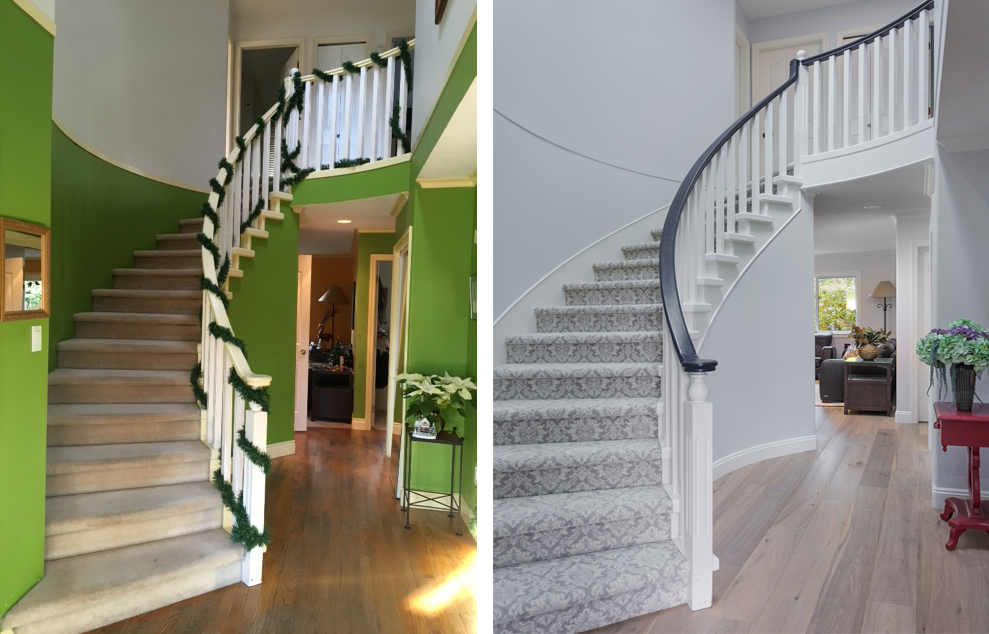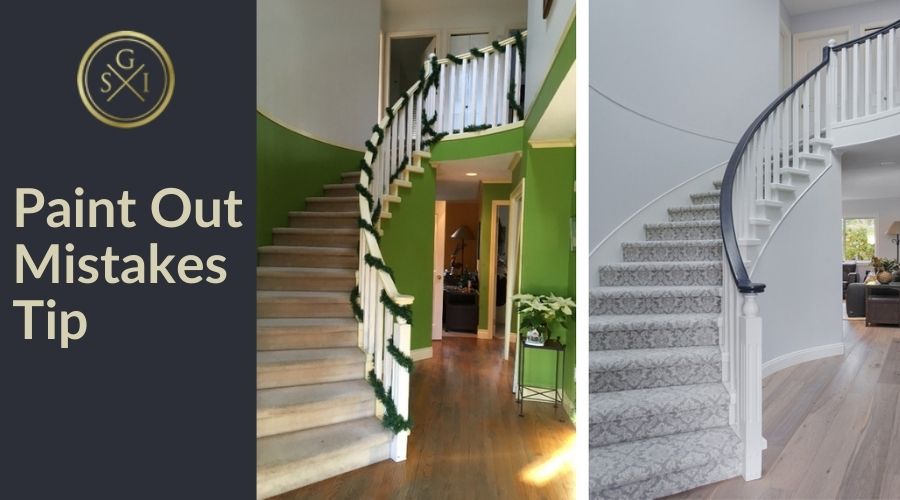Did you know that it’s really easy to paint out mistakes or unwanted details? The rule of thumb is, if you want to highlight something, then you make it bolder or brighter than the object it is beside.
If you want to hide something, you blend it into whatever surrounds it. That same rule applies to the architectural details in your home.
Let’s say you have beautiful, oversized crown moulding in your living room and you want it to really stand out against the wall colour. If your walls are dark, you paint it a bright white. If the walls are light, you paint it a dark colour.
But, say you want it to disappear? Then what? If you cannot (or do not want to) remove it, paint it out in the same colour as the wall.
For example, in newly built homes, there is often a small trim piece that divides the upper and lower floors in a stairwell. This small piece of trim has been put there to hide the drywall joint and IS NOT considered trim.
Unless you want to highlight it and make your stairwell appear broken up, this should always be painted out in the same colour as the wall.
If you have two different colours in the stairwell (upper and lower that meet in the middle), pick one of the two wall colours to paint this trim. Do not paint it the contrasting trim colour.
Notice the difference in the two examples shown below. The only elements we changed were the paint colours. The first is very dramatic and high contrast, which feels heavy and busy, where the second feels more open, light and airy.

Whatever your needs are, ask us how we can help you to pick a stunning palette that reflects your style and personality.

